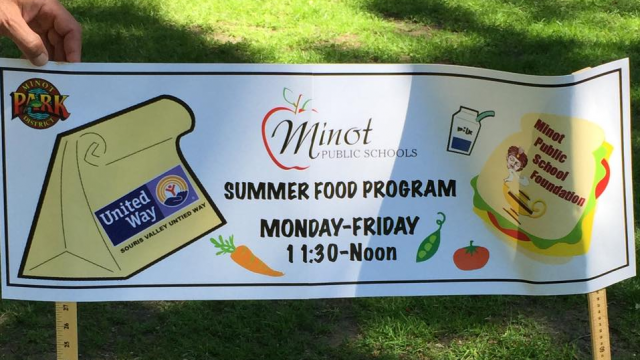USDA Program Loophole Has Taxpayers Providing A "Free Lunch" For Pretty Much Everyone

The website for the USDA’s Summer Food Service Program states it “ensures that low-income children continue to receive nutritious meals when school is not in session.” But what if I told you that at 65 locations across the state – mostly at parks and churches – the taxpayers are feeding kids and even grownups regardless of their ability to pay?
I got tuned into the situation when a Mandan mom contacted me concerned when she learned that her son, involved in a not-cheap summer program, would be getting at least some of his meals through a program intended for low-income children. I wrote about it at Watchdog today:
Mandan resident Carla Barrios contacted Watchdog after she learned her child would get the free lunch.
Nikki Scherr of the Mandan Park District confirmed children in the district’s Summer MAC program, which costs $1,250 per year, get some of their lunches through the USDA program. “Just on Fridays we attend,” Scherr told Watchdog. “I know Becky Heinert wanted us to attend Monday through Friday, but due to other activities we were only able to attend on Fridays.”
Scherr said kids in her program qualify because the district in which she operates is classified as low-income.
I contacted the Department of Public Instruction for more information, and it turns out that this is happening at dozens of sites all over the state:
North Dakota Department of Public Instruction spokesman Dale Wetzel said 89 meal locations operate in the state; 65 in areas that qualify for free lunches. In North Dakota, personal incomes have nearly doubled over the past decade.
“A district may qualify as an open meal site if 50 percent or more of its students qualify for free or reduced-price meals,” Wetzel told Watchdog in an email. “The area can also qualify if census data identifies the area as being low-income. If either of those criteria are met, any child may eat for free at the area’s summer meal site(s).”
Barrios made a good point to me, saying she’s worried that her son and other kids who aren’t low-income are going to get counted as low-income to justify the program. She said that it “will conflate the numbers in the needs-based program.”
“Including all kids under 18 in a needs-based program funded by taxpayers is concerning,” she told me. “These numbers will be flawed and should not be used for any statistical analysis of numbers of homeless or the necessity of needs based programs.”
That’s a valid concern, I think, especially given that this program seems to be growing rapidly:
In 2014, the program, including meals and other costs, cost taxpayers $611,077 in North Dakota.
The program served 5,368 meals in 2013 and 6,204 meals in 2014. But through June 16, Wetzel estimates, the program had already served more than 7,243 meals. The program ends Aug. 14.
Linda Austin, the Children’s Program coordinator at the Mandan Public Library who helps with the program, says more sites in North Dakota are available this year.
“This is a USDA program that is used nationwide,” she told Watchdog. “Some of the bigger cities use it in the inner cities targeting those areas that are qualified by income. They opened a bunch of new sites in North Dakota.
I don’t think anyone is opposed to the idea of feeding hungry kids. The question here is whether or not it is good policy to have such a wide-open program. Are we really going to be feeding kids who need to be fed? Whose parents might not be able to afford a good lunch? Or are we going to be subsidizing lunch for summer programs and kids whose parents can pay for meals?
I’d rather spend tax dollars feeding people truly in need. Not subsidizing free meals for just about anybody.




